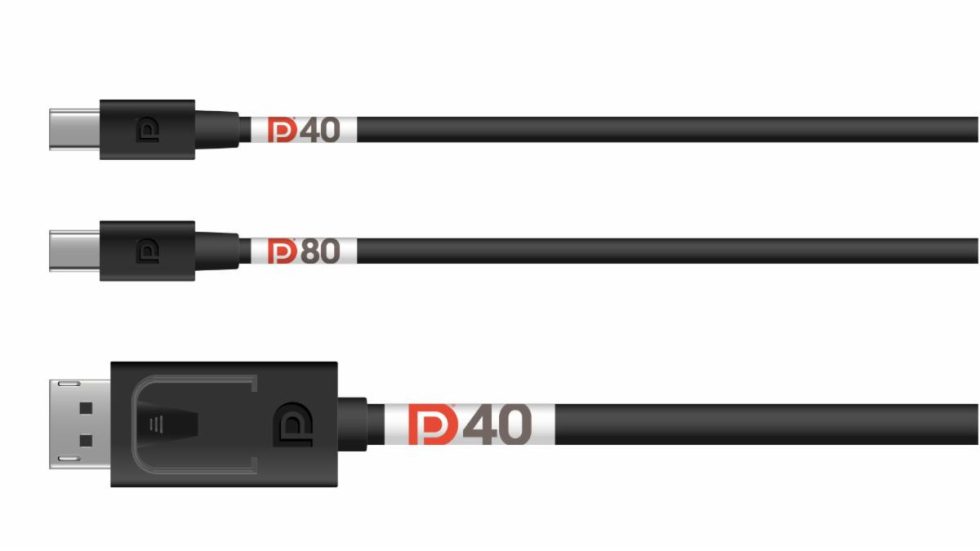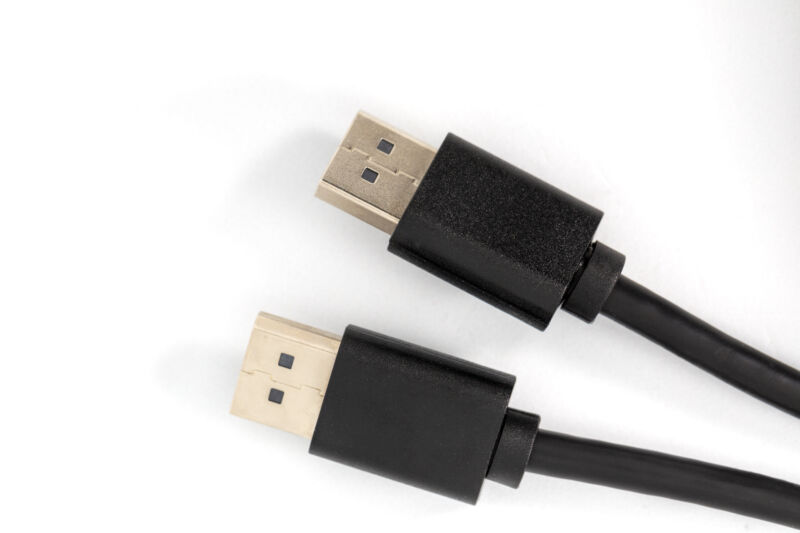VESA released the DisplayPort 2.1 specification today. Typically when an industry group announces a new standard, it takes months or even years for products supporting the spec to be available to consumers. But DisplayPort 2.1 products are already available; in fact, you may already own some. VESA also declared today that any product that was already DisplayPort 2.0-certified before today's announcement is now DisplayPort 2.1-certified, too.
"VESA has been working closely with member companies to ensure that products supporting DisplayPort 2.0 would actually meet the newer, more demanding DisplayPort 2.1 spec," the announcement from VESA, which also makes DisplayHDR, AdaptiveSync/MediaSync, Clear MR, and monitor-mounting specs, said.
"Due to this effort, all previously certified DisplayPort 2.0 products including UHBR (Ultra-high Bit Rate) capable products—whether GPUs, docking station chips, monitor scalar chips, PHY repeater chips, such as re-timers, or DP40 / DP80 cables. (including both passive and active and using full-size DisplayPort, Mini DisplayPort, or USB Type-C connectors)—have already been certified to the stricter DisplayPort 2.1 spec," VESA also said.
Just like that, DisplayPort 2.0 products have been bumped up a tick. However, there aren't many DisplayPort 2.0 products to speak of right now. DisplayPort 2.0 products were initially expected in 2019 but, due to the COVID-19 pandemic hurting testing capabilities, didn't start becoming available until this year.
AMD Ryzen 6000 is DisplayPort 2.0-certified, as are some MediaTek and RealTek chipsets, DisplayPort cables, and docks, but that's about it. We don't know of any DisplayPort 2.0 monitors readily available for purchase in the US. Intel's Arc graphics cards, including the Intel Arc A770 and A750, support DisplayPort 2.0, but Nvidia's latest GPUs, the RTX 4090 and 4080, and AMD's latest cards, the Radeon RX 6000-series, do not.
DisplayPort 2.1 versus DisplayPort 2.0
That leads us to the obvious question: What's the difference between DisplayPort 2.0 and DisplayPort 2.1?
The new DisplayPort 2.1 confirms the use of the same physical layer (PHY) specification as USB4. According to VESA, that change will yield more efficient DisplayPort tunneling over the latest generation of USB-C. As USB-C becomes ever more ubiquitous, it makes sense for DisplayPort to play nicely with the connector.
“Achieving greater alignment between DisplayPort and USB on a common PHY has been a particularly important effort within VESA given the significant overlap in use case models between the DisplayPort and USB4 ecosystems,” Alan Kobayashi, VESA board chair and DisplayPort Task Group chair, said in a statement.
Further, DisplayPort 2.1 brings an updated bandwidth management feature that VESA claims will allow for DisplayPort tunneling over USB4 to coexist with other I/O traffic "more efficiently" than before.
The next version of DisplayPort also requires support for VESA's Display Stream Compression (DSC) codec and Panel Replay to reduce the amount of bandwidth required for transporting DisplayPort tunneling packets.

Finally, the DisplayPort 2.1 specification brings more stringent requirements to DisplayPort cables, including Mini ones. DisplayPort 2.1 cables operating at up to 40Gbps, which VESA dubs DP40 cables, are specified to support lengths of "beyond" 6.6 feet (2 m) while maintaining performance.
DisplayPort 2.1 cables operating at the spec's max capability of 80Gbps, meanwhile, are specified to operate at full performance at distances "beyond" 3.3 feet (1 m), VESA announced today.
As many have probably noticed, DisplayPort 2.1 doesn't increase max throughput over DisplayPort 2.0 and won't bring more advanced capabilities around things like max resolution and refresh rate. VESA discussed DisplayPort 2.0 being used with monitors with resolution as high as 16K (15,360×8,640 pixels), including at 60 Hz with HDR and DSC. DisplayPort 2.0 has also been associated with speedy, high-resolution displays, such as 4 K, 240 Hz monitors that don't rely on compression.



3175x175(CURRENT).thumb.jpg.b05acc060982b36f5891ba728e6d953c.jpg)
Recommended Comments
There are no comments to display.
Join the conversation
You can post now and register later. If you have an account, sign in now to post with your account.
Note: Your post will require moderator approval before it will be visible.